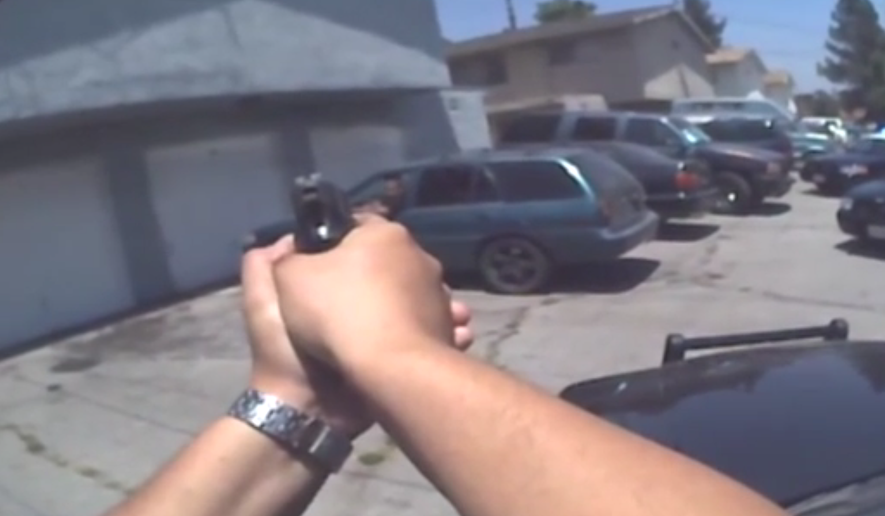In the most sweeping study of its kind, police were more reluctant to shoot black suspects than their white counterparts, contradicting the widely accepted “racist cop” narrative driving movements such as Black Lives Matter.
Instead, the Washington State University research, which was conducted before the 2014 shooting of Michael Brown in Ferguson, Missouri, lends support to previous studies pointing to a “reverse racism” phenomenon in policing.
“We need to move beyond the post-Ferguson atmosphere where all use of force against a racial/ethnic minority person is considered biased and unreasonable until proven otherwise,” concluded the study, published in the May edition of the academic journal Criminology & Public Policy.
“We need to move beyond this atmosphere that leads officers to put their lives in danger to avoid the significant-to-dire consequences of using force even when it is justified,” the report said.
The study, “The Reverse Racism Effect,” conducted by WSU researchers Lois James, Stephen M. James and Bryan J. Vila, examined the behaviors of 80 police officers from Spokane, Washington, the largest sample size of its kind using state-of-the-art, life-size video simulators with actors posing as suspects.
The officers were given real handguns rigged to shoot lasers instead of bullets and wore their on-duty uniforms to create a more realistic environment. Previous studies pointing to racial bias in police have used push-button technology, with test subjects pressing “shoot” and “don’t shoot” buttons when confronted with images of black and white suspects.
Studies dating back to the 1970s have pointed to police racism for the disproportionate number of blacks shot by law enforcement. One researcher memorably concluded in 1974 that “police have one trigger finger for whites and another for blacks.”
Other research has cited the greater incidence of violent crime committed by blacks, and thus interaction with the police, as the reason for the manifest gap in the use of deadly force.
A 2001 study found that blacks committed 43 percent of the felonious killings of officers, even though blacks made up about 12 percent of the population.
The WSU article did not find that the officers studied were free of subconscious racial bias — far from it. In fact, fully 96 percent were more likely to associate images of weapons with black faces on the Harvard University Implicit Association Test.
Even so, an examination of shooting errors found that the officers were “slightly more than three times less likely to shoot unarmed Black suspects than unarmed White suspects,” the article said.
What’s more, officers took “significantly longer” — 200 milliseconds on average — in deadly force scenarios to shoot armed black suspects than armed white suspects, controlling for variables such as “demeanor, language, dress, distance from participant, movement, location, sound and light levels.”
The scenarios were also “randomized,” meaning that an officer did not receive back-to-back simulations involving the same situations with only the race of the suspect changed. The simulation was “buried in a 60-minute long battery of cognitive tests” that had nothing to do with race.
The findings reinforce those of two previous WSU studies, including a 2013 investigation that found reverse racism in decisions on whether to shoot black or white suspects by police officers, former military personnel and members of the general public.
The research is also consistent with that of David Klinger, University of Missouri-St. Louis criminology professor. In his interviews with more than 300 police officers, he said “multiple” officers told him they decided against shooting black suspects in situations where deadly force could have been permitted.
The WSU study concludes that fear of the “social and legal consequences” is the most likely explanation for the officers’ hesitation when confronted with black suspects.
“Although of course there are no social or legal consequences for officers in the simulator, these concerns might be so ingrained in officers that they influence their behavior in any setting,” said the study.
Of the 80 officer participants, 76 were white and 71 were male, and had on average 14.5 years of experience on the Spokane force.
The experiments were conducted from August 2012 to November 2013 at the Simulated Hazardous Operations Tasks laboratory at WSU’s Sleep and Performance Research Center.
• Valerie Richardson can be reached at vrichardson@washingtontimes.com.




Please read our comment policy before commenting.